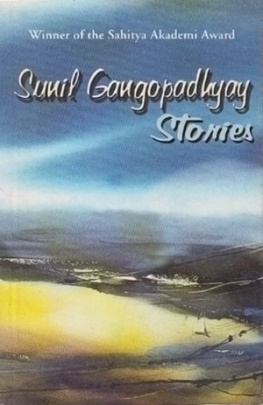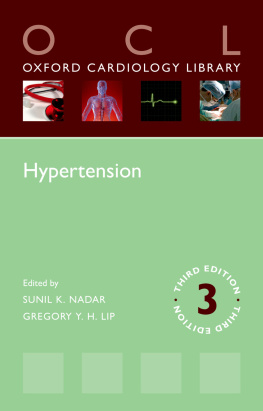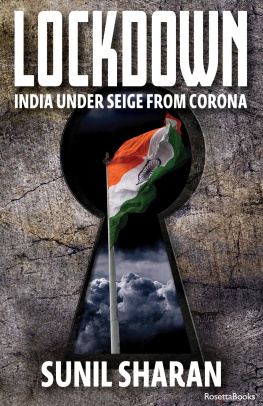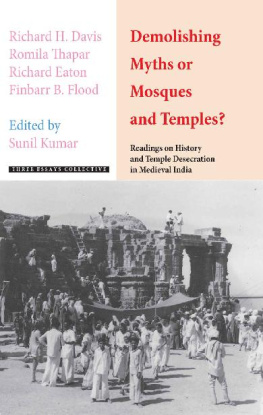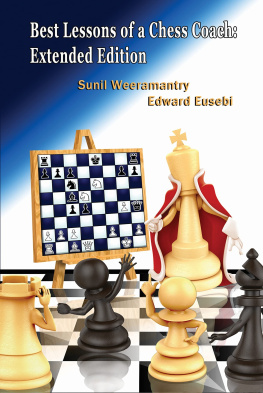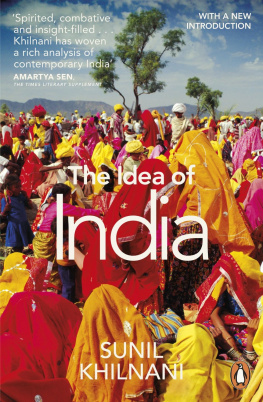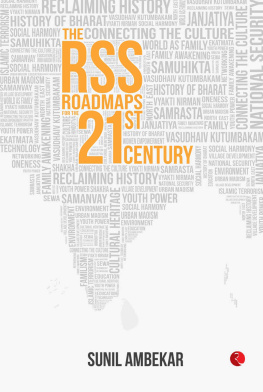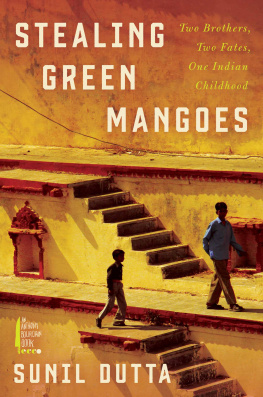Born in 1934 in Faridpur, now in Bangladesh, Sunil Gangopadhyay came as a refugee to Calcutta in 1947, following the partition of India. The family suffered extreme poverty initially and Sunil, though only in his teens, was forced to find employment. He still managed to continue his education, taking his Masters degree from Calcutta University.
Aruna Chakravarti took her Masters and Ph.D. degrees in English Literature from the University of Delhi. She has held the post of reader in one of the affiliated colleges of the university for many years and is, at present, its principal. She is also an author and translator of repute.
Introduction
When Penguin India approached me with a request to translate Sunil Gangopadhyays Sei Samai, I found myself, I must confess, somewhat at a loss. I had read the book twice and loved every moment of it but the thought of rendering it into English was daunting. For one thing it was a marathon projecttwo volumes of closely printed text running into nine hundred and seven pages! And that was not all. I was instructed to compress the matter and bring it down to five hundred pages. I wrote to the author, whom I had met several times, and asked him to suggest areas that might be deleted without disturbing the intrinsic pattern of the book. But he, very graciously, wrote back to say that he would leave that to me, having full faith in my abilities.
Thus, with the responsibility fully and squarely on my shoulders, I sat down to take stock of the situation. And to my surprise, I found that the task was not so formidable after all. The English language lends itself, quite naturally, to greater precision than the Bengali. So, a certain amount of tightening could be achieved without undue strain. Discreet deletions here and there took care of the rest.
There was another hurdle that had to be overcome. The characters of Sei Samai speak the lively dialect of nineteenth-century Calcutta. I researched a bit, trying to find a corresponding dialect in English. Then, rejecting every one I found as unsuitable, I decided to make my characters speak plain twentieth-century English with a few Bengali phrases and exclamations thrown in for the ambience. The effect, I find, is not too much at variance with the original. I hope my Bengali readers will share this view.
And nowa few words about Sei Samai. The novel, appearing in serial form in Desh over a period of two and a half years and published in two volumes in 1981 and 1982, respectively, presents a bold and startling deviation from the Marxian search for mans salvation that was Sunils forte in his work of the sixties and seventies. Sei Samai is a period novel set in nineteenth-century Bengal. It explores the cross-currents of social, political and intellectual life in the city of Calcutta during the period generally referred to as the Bengal Renaissance. This period, in the opinion of Shibnath Shastri, stretches through the two decades between 1825 and 1845. Those twenty years, he writes in his Ramtanu Lahiri and Bengali Society of the Time, ushered in a new era in the history of Bengal. There was an awakening in the realms of politics, religion and education such as had never been witnessed before. Sunil Gangopadhyay tries to reconstruct this awakening in Sei Samai but the time-frame of his novel is different. My personal view, he writes in his epilogue to Sei Samai, is that the Bengal Renaissance, as we understand it, manifested itself not in the span between 1825 and 1845 as Shibnath Shastri suggests but in the three decades between 1840 and 1870.
The novel has a vast canvas against which the lives and destinies of a number of historical figures of the time are traced. Many fictional people and events find their place, too. In fact, one of the unique features of the novel is the deftness with which the author weaves the actual and the purely fictional into the tapestry of his story. Another is the quality of his voicerational, analytical and totally without bias.
Sunil Gangopadhyays attempt is to synthesize two approaches to history. Like his illustrious predecessor, Bankim Chandra Chattopadhyaya in Durgsnandini, Mrinalini, Chandraskhar and Anandamath, he tries, on the one hand, to explore the reality of historical events and reconstruct them as faithfully as possible. On the other, he moulds history to the point where it embodies a vision. History is both symbolical and prophetic in Sei Samai.
The characters of Sei Samai, historical and fictional, are flesh and blood human beings, caught between two worldsone old, decrepit and dying by degrees and the other struggling to be born. They are all protagonists; all engaged in a strugglesome to keep alive and perpetuate the old, others to hasten its death and bring about the birth of the new. The characters are historically authentic for the most part and so is the world they people. Yet, Sei Samai is not history. Sunil Gangopadhyay makes that amply clear. Sei Samai is a novelnot a historical document, he writes in his epilogue. History is a record of palpable facts. Fiction is not. The fiction writer, even when depicting historical truth, has to invest it with the light of the imagination. Thus, Sunils historical characters think, act and feel as he sees them do in his minds eye. Vidyasagar speaks a rough and ready tongue and weeps at the slightest provocation. Debendranath Thakur exchanges the highest philosophical ideas with Rajnarayan Basu over a glass of wine. Harish Mukherjee goes drinking and whoring with the lowest of the low and Madhusudan Datta has homosexual yearnings for Gourdas Basak.
Readers have questioned these aspects of the book and indicted the author for taking unwarranted liberties. Sunil answers their charges with the words: We Indians believe in idol worship and cannot rest in peace till we have deified those we respect... But blasphemy is an excellent component of great literaturea most useful one, too. When an attack, true or fabricated, is directed against an illustrious personage of a previous age and time, the consequent situation is fraught with controversy. And in the analyzing that invariably follows new light is sure to be shed and a better perspective acquired. T.S. Eliots near murder of Shelley did not destroy Shelley. It sparked off a curiosity leading to greater awareness in the mind of the reader. I have been accused of belittling the great sons of our land. I submit that I have done nothing of the kind. If, in the interest of realism, Ive depicted some of them as having feet of clay, I consider that Ive done no wrong.



